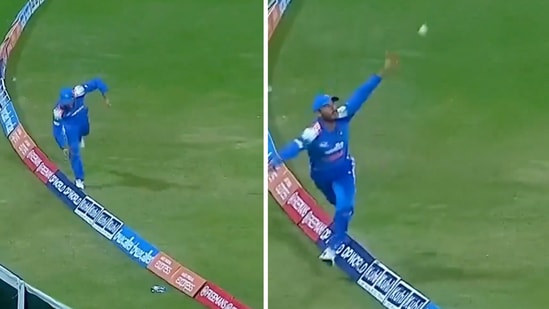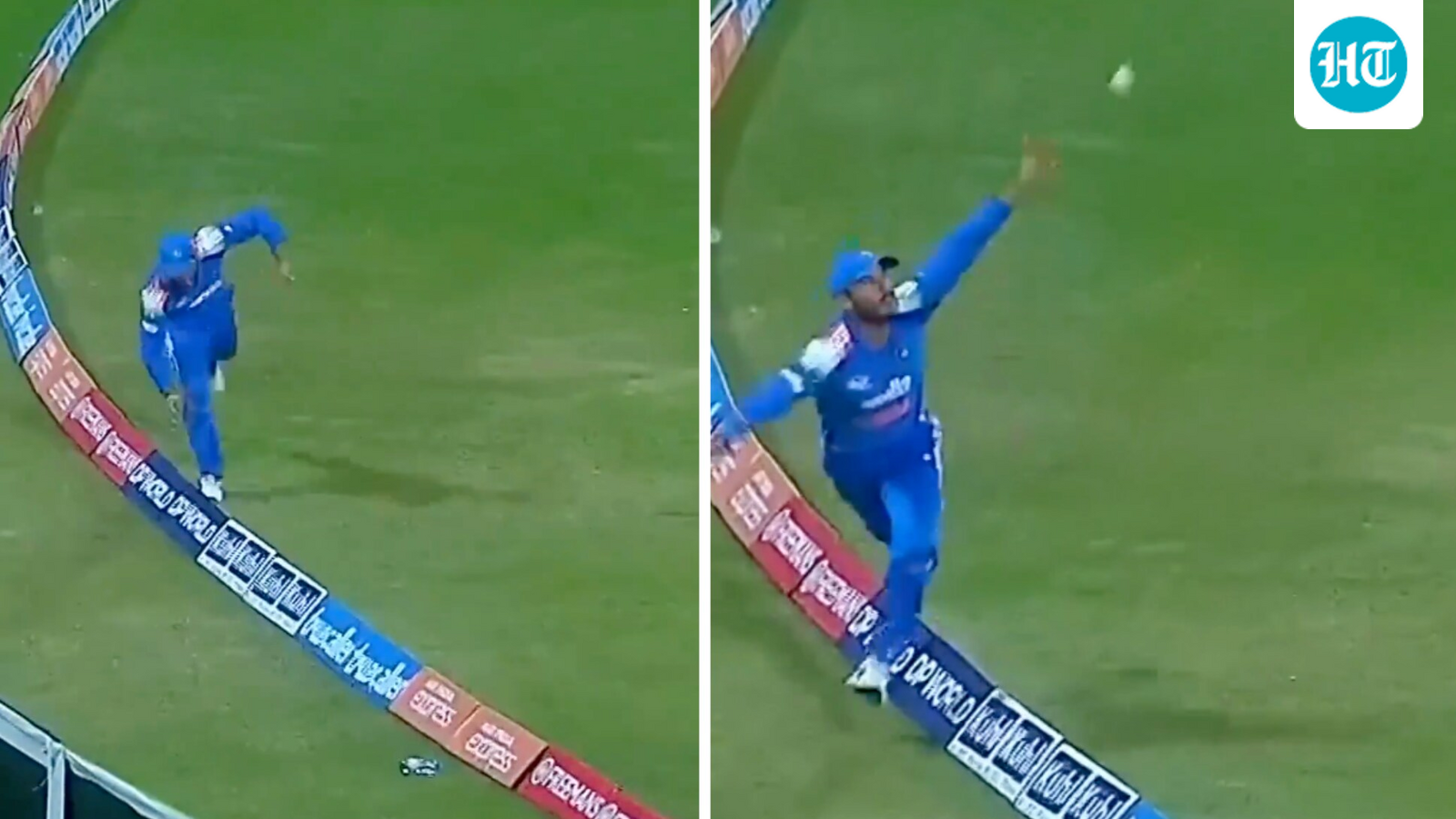India A were thumped by the Pakistan Shaheens in their Asia Cup Rising Stars encounter in Doha, as the Pakistan batters took only 13.2 overs to chase down a target of 137. India will not be happy with a performance that saw them collapse and lose their last eight wickets for 45 runs, and will be even more disappointed that their bowling effort couldn’t make a contest of the match.
 Nehal Wadhera and Naman Dhir were involved in an extremely controversial boundary catch between India A and Pakistan A.(Screengrab)
Nehal Wadhera and Naman Dhir were involved in an extremely controversial boundary catch between India A and Pakistan A.(Screengrab)
However, they might also feel hard done by after a piece of controversy struck during the chase. With opener Maaz Sadaqat batting well and guiding Pakistan towards a victory, India thought they had a breakthrough and an opening as he seemed to be caught fairly by a boundary relay catch between Nehal Wadhera and Naman Dhir.
India’s players were celebrating the wicket, and the batter himself was already walking off the field, but controversy struck as the third umpire looked at the replays for an extended period of time before judging the batter not out.
It was a moment that caused considerable confusion and frustration in the Indian camp, as captain Jitesh Sharma and his players attempted to understand why Sadaqat hadn’t been given out. To make matters even more confusing, the third umpire also didn’t award a six; rather, it went into the scorebook as a dot ball.
What does the rulebook say?
Cricket fans immediately turned to the rulebook. Under Law 19.5.2 of the ICC’s Playing Conditions for T20Is, updated in July this year, the rule reads as follows:
“19.5.2.1: … [The] fielder may then jump from outside the boundary in order to make contact with the ball whilst airborne. After making contact with the ball once airborne, all subsequent contact with the ground by that fielder, until the ball becomes dead, must be within the field of play. Any subsequent contact with the ground outside the boundary by that fielder during that delivery, whether or not in contact with the ball, will result in a boundary being scored.”
Did the third umpire misinterpret the law?
Where the third umpire seems to have gotten it wrong is that this rule only applies after a second airborne contact has been initiated with the ball. Had Wadhera thrown the ball into the air for himself, leapt to become airborne once more, thrown it to Dhir and then landed outside the boundary, a six would have been the right call.
However, given that Wadhera never made contact with the ball after he had grounded himself beyond the boundary, as this law dictates, the ball cannot be deemed to have been grounded beyond the boundary either.
Since he released it after his initial touch, the ball was still in play, and Dhir’s completion of the catch was clean and valid.
To put it simply, Wadhera was never in control of the ball after he made contact with the boundary beyond the ropes, and therefore became irrelevant to the play once he had passed the ball on to Dhir to finish the relay catch. The confusion stems from neither a wicket nor a six being awarded in that moment.
Not the only controversy in a one-sided match
However, India A will know they cannot use this instance as an excuse, with Pakistan needing 44 runs from 11 overs at that point in time.
This wasn’t the only controversy in the game, as Ashutosh Sharma had earlier been given out despite the ball looking nowhere close to an LBW. Ramandeep Singh was later judged safe at a run-out, which also looked to be a fair dismissal, with no good angles being presented to properly judge during the replay.
Sadaqat had already crossed his 50 at that time, and finished on a well-made 79* to take Pakistan through to the semifinals. India will have a lot to reflect on, given what was an all-round bad day in the field, as they enter the do-or-die stage of their tournament.
